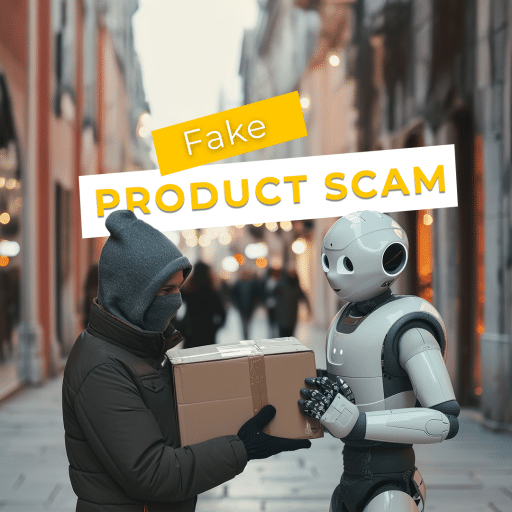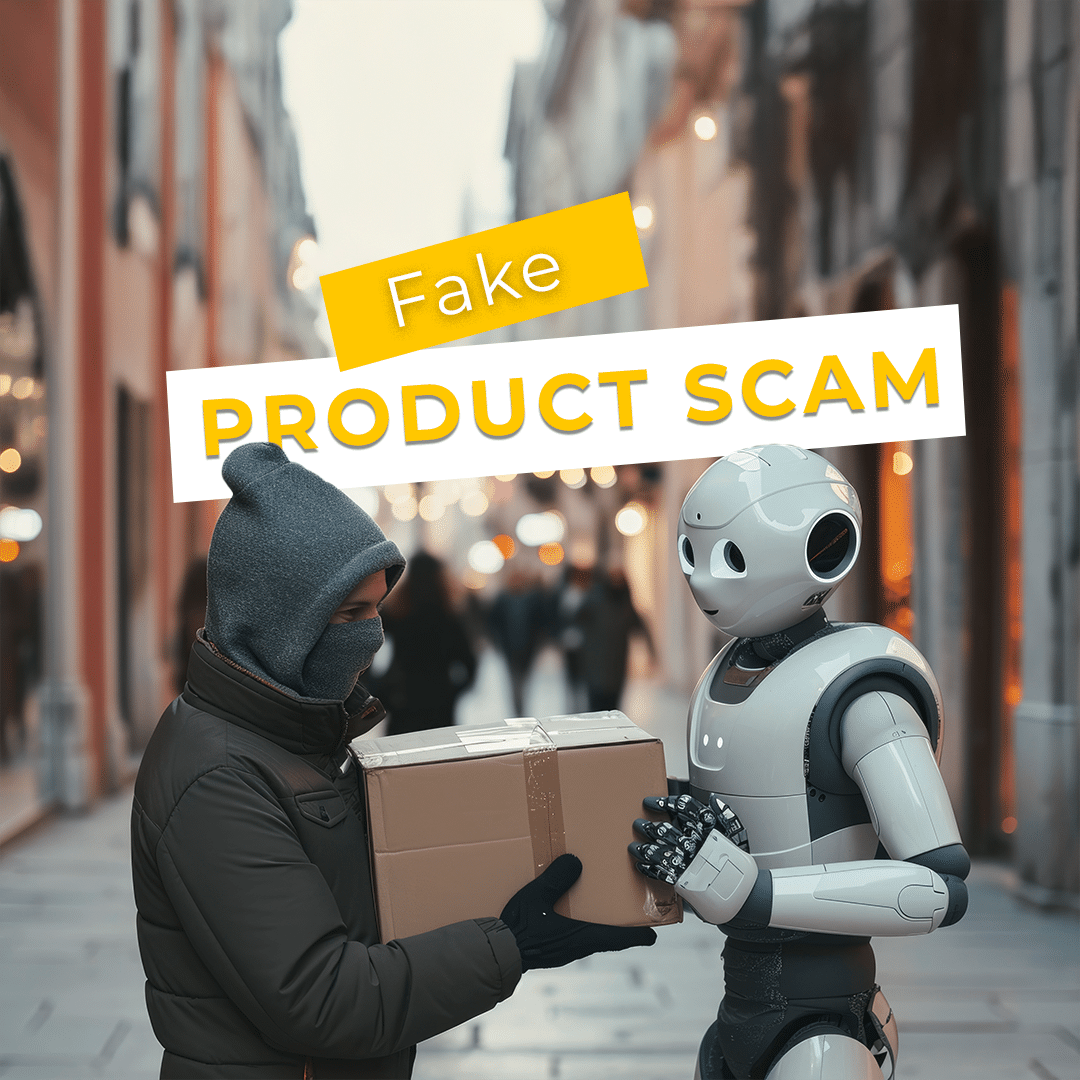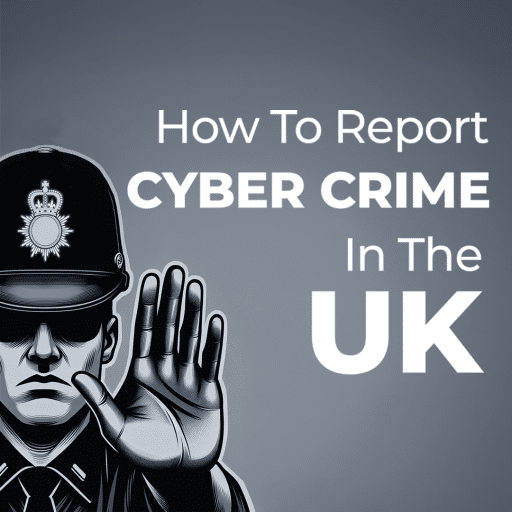Social media is a perfect opportunity to market products to people everywhere. However, minimal barriers to what and how a product can be sold has led to a surge in online shopping fraud. Cybercriminals now use these platforms to promote fraudulent products directly to millions of users with the intention to exploit them. Like with any scam, awareness drastically lowers your chances of becoming a victim. That’s why today we’re spreading awareness about scams you need to look out for on social media.
How Fake Product Scams Operate on Social Media
Social media scams come in various forms. However, fake product scams are especially dangerous because most victims can never recover the money that they lost. One of the key elements to online shopping fraud is establishing credibility which is the purpose of using legitimate social media platforms to promote their fake products.
Common Tactics Used by Scammers
Anonymity and exposure to many potential victims has contributed to the recent boom in scams. Crypto and AI are two more tools that make identifying online criminals even more difficult. It’s on us to educate each other on online shopping fraud and the ways we can protect ourselves from them. Here are a few common fake product scams to look out for.
- Fake ads and sponsored posts for cheap or luxury items. Scammers are typically not patient and they use ads or sponsored posts to quickly find victims. There are not a lot of limitations on who can create an ad or sponsored post so staying vigilant is important.
- Impersonation of legitimate brands and sellers. Attempting to quickly gain credibility, cybercriminals often impersonate legitimate brands to draw victims in. This allows the perpetrator to overprice their items, steal your information, or take your payment without ever shipping the product.
- Use of fake reviews and testimonials to build credibility. Reviews and testimonials are primarily how you can identify a fake product. However, sophisticated scammers will create fake reviews to make themselves look credible to consumers.
- Direct messaging with too-good-to-be-true offers. It is a good practice to approach any offer online that is too good to be true as a potential scam. You should verify the seller, visit the main website of the product, or avoid taking the risk entirely.
- Requesting payments through untraceable methods like gift cards or crypto. Traditional financial transactions leave a lot of data behind that can be traced. On the other hand, gift cards and cryptocurrency are difficult to track which is why criminals use them.
- Adopting a fake pet scam. Aspiring dog parents looking to adopt may stumble upon a fake pet adoption posting like a puppy scam in the Facebook Marketplace. People looking to pay for specific breeds may pay for a pet before they see it themselves, opening the door for scams and fraud.
- Using fake products to receive customer’s private information. Sharing your financial information with the wrong person can lead to devastating losses. Some fake products can be used to receive a customer’s private financial information which they will then use for extortion or fraud.
Platform-Specific Scam Examples
There are different scams that can be found on every social media platform. However, Facebook, Instagram, Snapchat and Twitter are some of the most popular platforms for scams. Here is a breakdown of how to approach the four different platforms when it comes to scams.
Facebook Marketplace
Like any market, Facebook Marketplace is full of scams from buyers and sellers. Facebook allows for anyone with an email to create an account, page, or make a listing on the marketplace. However, the platform allows users to connect on the marketplace through proximity which means buyers can verify the product in-person before paying for it.
- Shipping scams. A scammer will never ship an item you paid for and sometimes will even create fake shipping labels to trick you.
- Overpayment scams. A buyer will send a seller more than the price of an item and requests the seller to return the surcharge. Then, they file a chargeback to get their initial money returned along with the surcharge.
- Faulty item or Counterfeit. A scammer will sell an item that is broken or a cheaply designed imitation for more money than it’s worth.
- Car Scams. Fake car listings can be a ruse to trick the victim into clicking a malicious link, steal your money online, or sell you a faulty car without your knowledge.
- Rental Scams. Fake rental properties are abundant on Facebook. Some will trick victims into sending a security deposit or requesting a fee to view the property.
- Puppy Scams. The scammer will post about a puppy litter on Facebook and will pose as a breeder or rescue shelter. They will avoid meeting in-person but will agree to shipping the puppy through freight or courier. However, the puppy doesn’t exist and they will continue to milk money from you with additional fees in a puppy scam.

Instagram may not have a marketplace but they do have influencers and online shops. Influencers have a lot more credibility on Instagram because of the visual nature of the platform. Scammers can impersonate an existing influencer or create a fake profile from scratch. After they gain a following, they can begin luring their followers into a scam. Here are a few more scams to look out for on Instagram.
- Customer support phishing scam. Instagram users will receive a message from fraudsters posing as customer support. The message will be urgent like a “Suspicious activity alert” or “account deletion imminent”. However, the scammers are tricking victims into clicking on a malicious link in a panic.
- Romance scams. Scammers use a fake profile to build a romantic relationship with a victim in direct messages. After the criminal builds trust with the victim, they will claim they need financial help or will demand a gift for validation of the relationship.
- Brand collaboration scams. Targeting influencers, scammers will pose as brands and offer profiles a partnership offer. If accepted, the perpetrator requests payment for partnership fees to continue forward.
Snapchat
Scams on Snapchat are typically sophisticated, using social engineering and phishing tactics to lure unsuspecting victims into giving away valuable information. Snapchat may be a less popular social media platform than Facebook or Instagram but the scams are just as dangerous. The scams can even descend into life-altering territories like Snapchat extortion. Here are a few scams to watch out for on Snapchat.
- Catfish scams. A scammer will pose as a public figure on Snapchat and then message strangers as that persona. This could lead to a romance scam, a phishing link, or even Snapchat extortion.
- Notification phishing scam. Posing as Snapchat IT support, the criminal will send the victim an email notifying them of a new message on their account or an urgent matter. The link, however, will direct the user to a malware-infested site.
- Fake product scams. Using Snapchat’s advertising or through fake profiles, a scammer will promote a fake product with the purpose of gathering private financial information from victims.
Twitter/X
Anyone with an email can create a Twitter account. On top of that, enrolling in Twitter Blue gives scammers more visibility than the usual platforms. Bots on Twitter are also egregious and plentiful in their attempts to scam users. If you plan to use Twitter, here are a few more scams to look out for.
- Fake giveaways. Giveaways asking users to retweet, follow, or provide personal details are common on Twitter. However, some of these giveaways are used to lure users into clicking a phishing link.
- Crypto scams. Crypto bots have flooded Twitter with offers that are too good to be true, giveaways, and posing as legitimate companies. These are all used by scammers to trick users into sending crypto or to capture your private information.
How to Identify a Fake Product Scam
The main way to combat the surge of fake product scams is to quickly identify the scams on social media. No matter the platform that you use, these red flags will help you find and avoid scams online.
- Unrealistically low prices. If it’s too good to be true, stay cautious. An extremely low price can be used to draw in as many potential victims as possible.
- Poor-quality websites with missing contact details. Most reputable sellers will have websites that provide basic contact information and details about the product.
- Limited or no return policies. For online products, businesses provide a grace period for consumers to make sure the product is what they expected. Limited or no return policies is peculiar and a sign that the seller may not have the best intentions.
- Pressure tactics urging immediate purchase. Reputable sellers will work with a consumer to complete the purchase. However, a scammer will get impatient and may use aggressive tactics to expedite your purchase.
- Strange payment methods (no PayPal, credit card, or escrow services). As we mentioned before, traditional payment methods are easily traceable. A strange payment method may be a sign that this is a scammer.
Tools and Techniques to Verify Legitimacy
There are tools and techniques that you can proactively use to investigate a seller before you do business with them. Make sure to use the following methods to verify legitimacy before making a purchase online.
- Reverse image search to check product authenticity. You can use Google’s reverse image search to verify if a product image has been stolen or to see the official price. In the case of puppy scams, a reverse image search can reveal if the images were stolen from another website.
- Checking for verified seller badges. On Facebook, there are seller badges to help buyers identify reputable sellers.
- Reviewing customer feedback outside the seller’s page. A scammer may populate the Facebook page or product reviews with fake testimonials. However, other websites like Google and Reddit will have more authentic reviews.
- Contacting brands directly to confirm product authenticity. You can buy the product off the main website directly or contact the brand to confirm if the listing on the platform is real.
What to Do If You Encounter a Fake Product Scam
If you have encountered a fake product scam or already made a purchase, you must act fast to preserve your finances or private information. Here are a few steps to take immediately when it comes to social media scams.
- Do not engage further with the scammer. You should stop replying to their messages when you realize they are a scammer. However, do not delete any correspondence. The messages you have are evidence that may be able to be used in the future.
- Report the ad/seller to the social media platform. Reporting social media scams is important. The seller may be removed which can can prevent others from becoming their victim.
- Alert your bank or payment provider if a transaction has occurred. Banks are generally required to refund unauthorized transactions. However, if you willingly sent money to the scammer, it will depend on the policy of your bank or provider.
- Share awareness in community groups to warn others. Spread the word with as many people as possible to reduce the scammer’s ability to lure unsuspecting victims. You can also encourage your close friends or family to report the account as well.
How to Report Scams on Different Platforms
Reporting a scam is essential to get the perpetrator removed from the platform. Facebook, Instagram, Snapchat, and Twitter have simple reporting systems in place to capture scams. You can use the following instructions to report a scam on any of the four platforms.
- Visit Facebook Marketplace.
- Find the product.
- Click the three dots.
- Select “Report”.
- Choose “Scam”(1).
- Go to the product page.
- Click the three dots.
- Choose “Report this listing”.
- Select a reason and follow the prompts.
- Visit the profile of the seller.
- Click the three dots.
- Select “Report” and follow the prompts(2).
Snapchat
- Go to the public profile.
- Click the three dots.
- Select “Report”.
- Choose the appropriate reason and follow the prompts(3).
- Go to the post or profile.
- Click the three dots.
- Select “Report”.
- Choose “Spam”.
- Your report is added to an automated review process(4).
Best Practices for Safe Online Shopping
When it comes to online shopping fraud, you have to do your due diligence. Don’t rush to buy a product without verifying the seller through the official brand store or investigating their business to find anything suspicious. Here are a few more tips to spot online shopping fraud.
- Read reviews from third-party sources. Reviews on the website provided by the seller or the social media platform aren’t the most reliable. Instead, look to other websites and third-party sources for authentic experiences.
- Use secure payment methods with fraud protection. Digital wallets like Apple Pay protect users from online shopping fraud with tokenization which replaces sensitive information provided in an online payment with a one-time use “token”.
- Avoid clicking on suspicious links from unknown accounts. Always verify links before clicking on them. You can hover over the link to see the destination URL or use URL checkers to see if there are any red flags.
Get Help From Digital Forensics
Staying vigilant on social media and assuming a product could be a scam will allow you to approach a every seller carefully and will reduce the likelihood of falling for a scam. Unfortunately, there are people who have fallen victim and suffered financial losses because of these scams. However, there are experts that can help victims of social media scams.
Digital Forensics Corp., for example, is a cybersecurity firm is well-versed in the ways of cybercriminals and uses the latest technology help victims fight back against their attackers. Our digital investigators are well experienced in tracking digital footprints and revealing the identity of cybercriminals all around the world. If you have been a victim to social media scams, contact Digital Forensics Corp. today for help.
Sources:
- https://www.facebook.com/help/www/1295340050874305
- https://help.instagram.com/396314741132037/?helpref=related_articles
- https://help.snapchat.com/hc/en-us/articles/7012399221652-How-do-I-report-abuse-or-illegal-content-on-Snapchat
- https://help.x.com/en/safety-and-security/report-a-post
DISCLAIMER: THIS POST IS FOR INFORMATIONAL PURPOSES ONLY AND IS NOT TO BE CONSIDERED LEGAL ADVICE ON ANY SUBJECT MATTER. DIGITAL FORENSICS CORP. IS NOT A LAWFIRM AND DOES NOT PROVIDE LEGAL ADVICE OR SERVICES. By viewing posts, the reader understands there is no attorney-client relationship, the post should not be used as a substitute for legal advice from a licensed professional attorney, and readers are urged to consult their own legal counsel on any specific legal questions concerning a specific situation.







